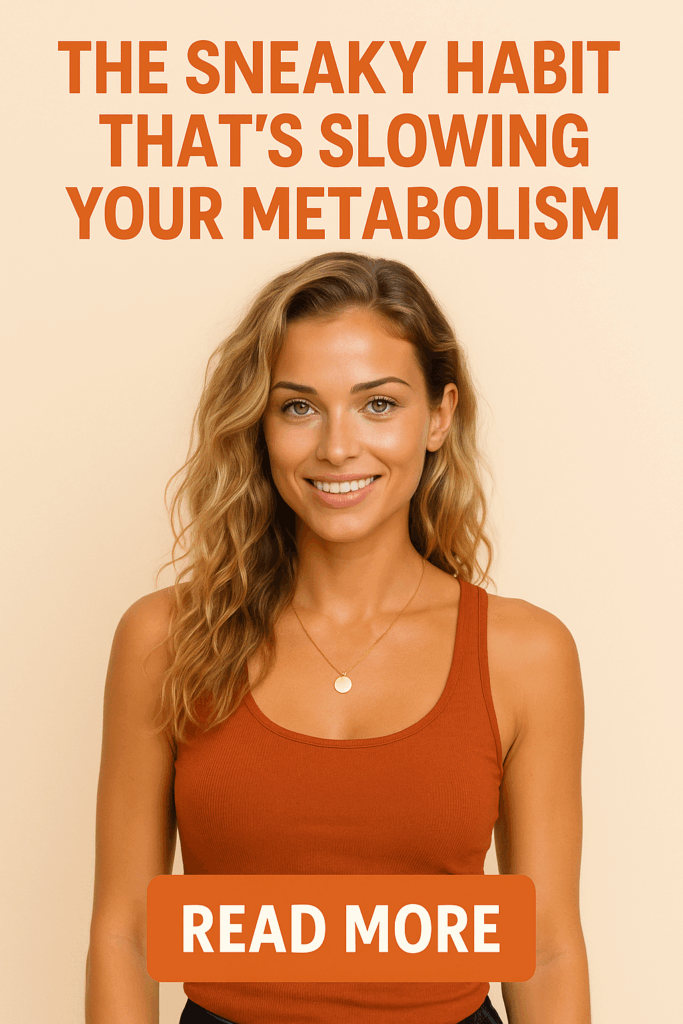Hey there, gorgeous! If you’re in your 30s and feeling the weight of emotional eating, trust me, you’re not alone. Many women face this challenge, often turning to food for comfort during stressful times. But here’s the good news: I’ve been there, and I’ve found a way out through mindful habits. Today, I’m sharing my journey and offering you a meal plan that can help you embrace a healthier relationship with food.

Hi, I’m Zara — fitness junkie, wellness nerd, and the voice behind FitByZara.com. This site is all about smart fitness and science-backed wellness tips for real women who want to feel their best.
Understanding Emotional Eating
3-Day Energy & Metabolism Reset
Grab the 3-Day Energy & Metabolism Reset — a quick-start guide to feel lighter, more energized, and back in control.

Where should I send your free reset guide?
Emotional eating isn’t just about hunger; it’s about feelings. Whether it’s stress from work, anxiety about relationships, or just the busyness of life, many of us reach for snacks when we’re feeling down. Here are some common triggers:
- Stress: Work deadlines, family pressures, or financial worries.
- Boredom: Reaching for snacks when you’re simply looking for something to do.
- Loneliness: Food can feel like a friend when you’re feeling isolated.
- Celebration: We often associate food with good times, which can lead to overeating.
My Mindful Journey
To tackle emotional eating, I adopted mindful eating practices. This means being fully present during meals, acknowledging my feelings, and understanding my body’s cues. Here’s how I did it:
1. Practice Awareness
- Journaling: I started keeping a food journal to identify patterns. What was I feeling before I reached for that cookie?
- Breathwork: Before meals, I take a few deep breaths to ground myself and tune into my body’s needs.
2. Create a Positive Eating Environment
- Set the Mood: I dim the lights, play soft music, and put away distractions like phones and televisions.
- Plating: I learned to serve my meals on beautiful plates, making every meal feel special.
3. Savor Each Bite
- Chew Slowly: Taking time to chew helps me appreciate the flavors and textures of my food, making me feel satisfied with less.
- Gratitude: I express gratitude for my meals, reinforcing a positive connection with food.
4. Develop Alternative Coping Strategies
- Healthy Outlets: Instead of reaching for snacks, I found healthier ways to cope, like journaling, yoga, or going for a walk.
- Mindfulness Practices: Meditation and deep breathing have become essential tools in my daily routine.
5. Stay Accountable
- Join a Support Group: Connecting with others who share similar struggles can be incredibly motivating.
- Share Your Journey: I talk about my experiences with friends and family, which helps keep me accountable.
My Mindful Meal Plan
To help you get started on your journey to mindful eating, here’s a simple meal plan for a week. This plan focuses on nourishing your body while keeping emotional triggers in check.
Day 1:
- Breakfast: Overnight oats topped with berries and almonds.
- Snack: Sliced apple with almond butter.
- Lunch: Quinoa salad with chickpeas, cucumber, and a lemon vinaigrette.
- Snack: Greek yogurt with a sprinkle of cinnamon.
- Dinner: Grilled salmon with steamed broccoli and sweet potato.
Day 2:
- Breakfast: Smoothie with spinach, banana, and protein powder.
- Snack: Carrot sticks with hummus.
- Lunch: Turkey wrap with lettuce, tomato, and avocado.
- Snack: A handful of mixed nuts.
- Dinner: Stir-fried tofu with bell peppers and brown rice.
Day 3:
- Breakfast: Scrambled eggs with spinach and feta.
- Snack: Celery sticks with peanut butter.
- Lunch: Lentil soup with whole-grain bread.
- Snack: Dark chocolate square (because balance is key!).
- Dinner: Baked chicken breast with quinoa and asparagus.
Day 4:
- Breakfast: Chia seed pudding with mango.
- Snack: Handful of grapes.
- Lunch: Mixed greens salad with grilled shrimp and avocado.
- Snack: Rice cakes topped with cottage cheese and tomatoes.
- Dinner: Zucchini noodles with marinara sauce and turkey meatballs.
Day 5:
- Breakfast: Whole-grain toast with smashed avocado and poached egg.
- Snack: A small orange.
- Lunch: Brown rice bowl with black beans, corn, and salsa.
- Snack: Popcorn sprinkled with nutritional yeast.
- Dinner: Grilled vegetable and quinoa stuffed peppers.
Day 6:
- Breakfast: Smoothie bowl topped with granola and fresh fruit.
- Snack: Cherry tomatoes with mozzarella balls.
- Lunch: Falafel salad with tahini dressing.
- Snack: Oatmeal cookie (because sometimes you need a treat!).
- Dinner: Shrimp tacos with cabbage slaw.
Day 7:
- Breakfast: Pancakes made with almond flour and topped with berries.
- Snack: Trail mix with nuts and dried fruit.
- Lunch: Vegetable sushi rolls.
- Snack: Cucumber slices with tzatziki.
- Dinner: Baked tilapia with roasted Brussels sprouts and quinoa.
Zara Says
“Mindfulness isn’t just a practice; it’s a lifestyle. When you learn to be present, food becomes a source of nourishment, not just a comfort.”
Final Thoughts
Beating emotional eating is a journey, not a race. By incorporating mindful habits into your daily routine and focusing on nourishing meals, you can build a healthier relationship with food. Remember, it’s about progress, not perfection. Start small, stay consistent, and be kind to yourself along the way. You’ve got this!
If you found this post helpful, I’d love to hear your thoughts. What strategies have worked for you in beating emotional eating? Let’s support each other on this journey! 🧘♀️🌸
HepatoBurn: Gentle Support for Steadier Days
When you’re stacking real habits—protein-forward meals, steps, and 7–9 hours of sleep—HepatoBurn is a simple add-on that supports the system behind energy, appetite, and metabolic rhythm.
Why Women 30+ Use It
- Pairs with an already-solid routine—no jitters, no crash.
- Easy to remember: 2 capsules with meals.
- Plays well with protein, walking, and strength training.
How to Use
- Timing: Breakfast & lunch are easy wins.
- Consistency: Use daily for a fair assessment.
- Stacks: Protein-first plates, post-meal walks, lights-down wind-down.
What It Isn’t
- Not a stimulant and not a magic fix.
- Best used alongside habits you’ll actually keep.
- Educational only—talk to your provider before new supplements.
Important: Educational only, not medical advice. Supplements don’t diagnose, treat, cure, or prevent diseases. Talk to your provider before changes to diet, exercise, or supplements.






















